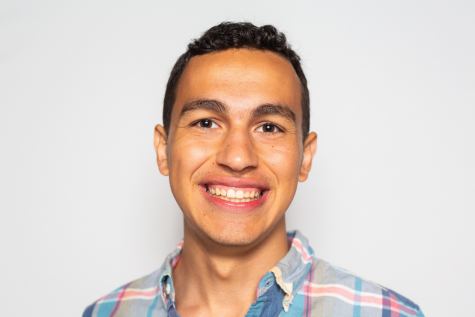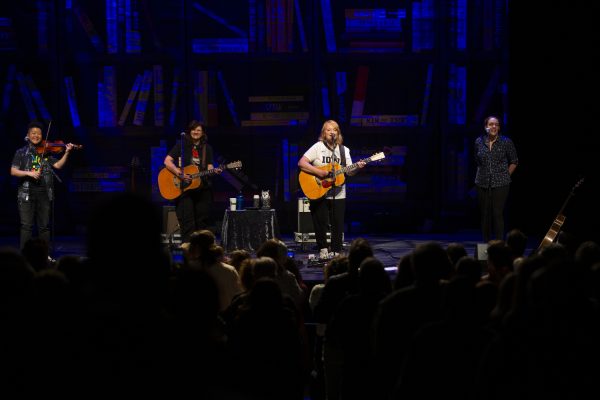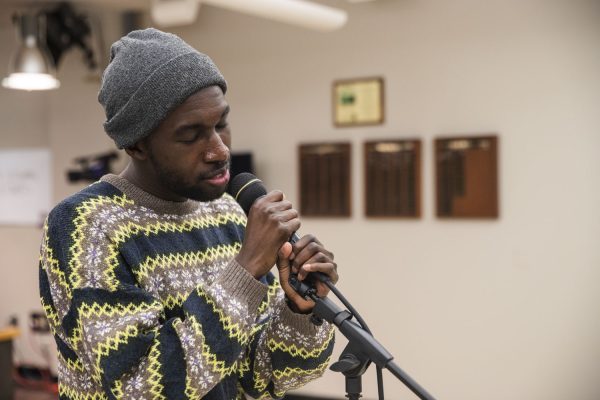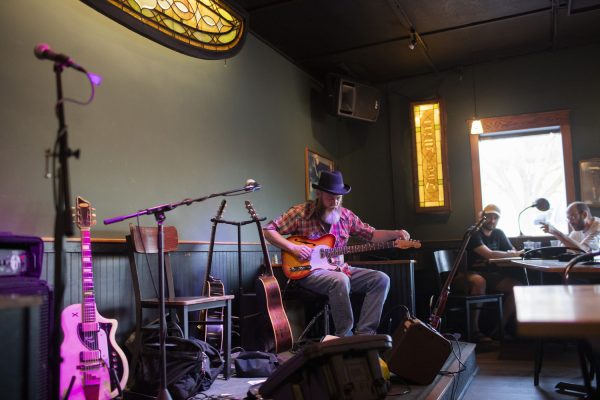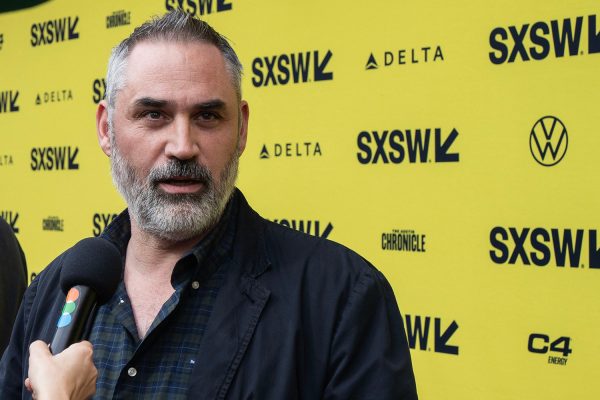Eight powerful choreographers to bring their talent to Space/Place
M.F.A. works will explore personal change and identity.
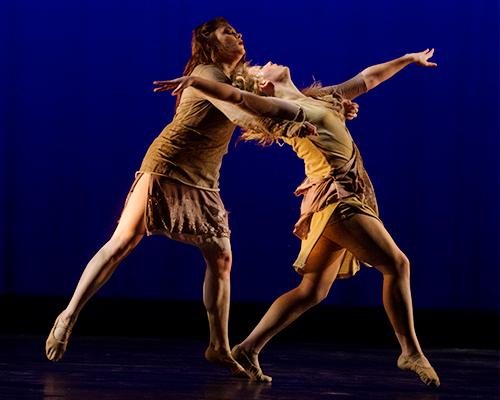
UI dancers Margaret Korn (left) and Zoe Maish (right) perform “Mud-Holes” during a rehearsal in Space/Place on Tuesday. “Mud-Holes” was choreographed by Eloy Barragán, a UI associate professor of dance.
April 12, 2019
It is one thing to learn a dance and perform it, but it is entirely different to choreograph it from scratch.
Eight M.F.A. graduate students will showcase their independent projects early next week. The graduates will not be on stage, but their work will be showcased through their performers.
The works will be performed April 15 and April 16 at 8 p.m. in Space/Place.
Angelica DeLashmette, a first-year student in the M.F.A. dance program on the choreography track, compares her piece, “Biorhythms,” to the transformation of a caterpillar to a butterfly.
“I’ve been playing with the idea of evolution and life cycles and how through life we go through these different rhythms,” she said. “You can look at it as cycles of change; we go throughthat physically but also emotionally. It encapsulates the many different rhythms that we go through as humans. We’ve been talking a lot about the process of change and the process of going from one thing to another, going from being one version of yourself to another version of yourself and what happens in that process.”
She specializes in hip-hop street dance and contemporary and has incorporated hybrid styles into the performance.
“I’m not naming it a hip-hop aesthetic piece, and I’m not naming it a contemporary aesthetic piece,” she said. “I’m interested in seeing how they connect. I’ve just been looking at the movement in my history, looking at what comes to that. Instead of labeling ourselves, we just kind of see what comes up.”
DeLashmette has worked with her undergraduate performers all semester, learning alongside them.
“I’ve been trying to give them ownership in the work,” she said. “Aesthetically, there are certain things I want to happen in the piece, but even in the coaching, I want them to find their own way and ownership. It’s a challenging process, but I think that the piece is not just surface level. It’s not just them regurgitating my ideas from earlier but digesting what the movement means to them.”
She said the theme of her choreography was inspired by changes in her life, including getting married and moving from Seattle to Iowa.
“In the last few months, there have been a lot of big changes in my life. Who am I as an artist?” she asked. “This isn’t the first time I’ve asked myself this; these are questions you ask yourself all the time. It’s just another cycle of me rediscovering myself as an artist.”
DeLashmette said Iowa’s dance program offers a well-rounded, wide range of opportunity
“Some programs focus a lot on teaching or focus a lot on one thing, but this program seemed very well-rounded,” she said. “This semester, I’ve been collaborating with a dramaturge. I’ve never done that before, and it’s been a really cool experience collaborating with a different artistic discipline. She’s offered some really cool perspectives.”
Another M.F.A. student who is collaborating in an interdepartmental project is Alyssa Gersony with her duet “Junk King.”
However, Gersony’s duet is not with another dancer, but a poetry M.F.A. candidate in the Writers’ Workshop. The poet will read her work on stage as Gersony moves around her.
“[The dance and poetry] are in dialogue with each other,” she said. “We’ve been thinking about concepts of the body, and mortality, and pathology, and intensity and how the self becomes socialized, thinking about the junk we accumulate as our identities accumulate.”
M.F.A. dance student Jessica Madden said the job of a choreographer is not to create something entirely new but elicit art from everyone in the room.
“I’ve started looking at my project as less of a construction from scratch and more of an excavation. Unlike other art forms, I’m not starting with a blank canvas,” she said. “Everyone in the room has their own experiences, so as a choreographer, I’m really interested in investigating what is in the room and using that to generate movement. My job as a choreographer is finding a way to shape all the material in a way that highlights it best.”
Second-year M.F.A. Sarah Olson recognized certain challenges that choreographers must face.
“We have our own aesthetic, but when you’re creating a piece on dancers and with dancers, you have to let them find their own embodiment,” she said. “It can be a little bit scary, but that’s also what the excitement is and joy in seeing others making discoveries in your work that you may not have made.”
Kate Vincek collaborated with a sound designer for her work, and she compared her piece to artificial intelligence from science fiction.
“Everything before has led to how we understand the world now,” she said. “The body is adaptable, sort of like this artificial intelligence. We can program ourselves to be who we want to be. It’s haunting in the everyday ways that people can deceive others. What is the baseline identity? I think it’s always fluctuating. How do you know who I really am? Do you even know who you yourself are?”



